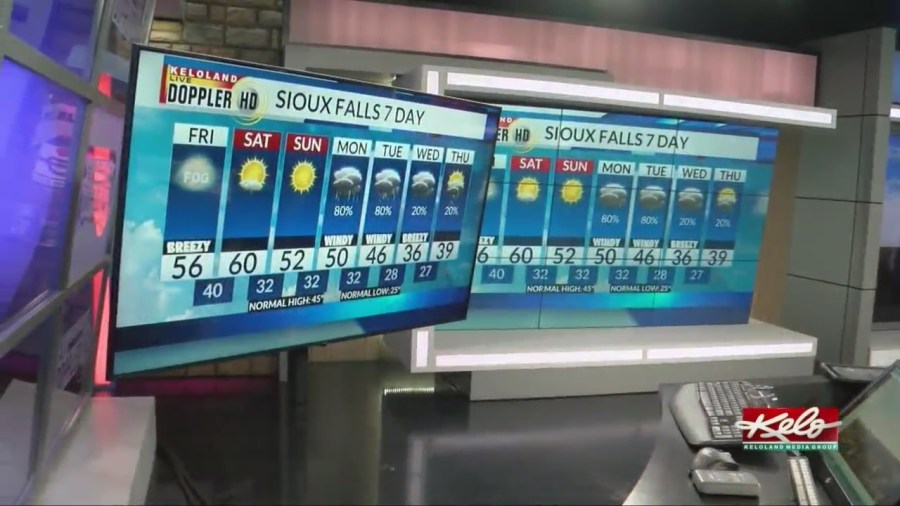SIOUX FALLS, S.D. (KELO) — Every meteorologist who studies the science of weather forecasting must adapt to the ever-changing technology available at our fingertips. Over the next few days, artificial intelligence technology will be interesting to watch.
Most of us in the weather forecasting business still consider “machine-learning” technology experimental, but useful to identifying potentially helpful tools for improving the forecast. The forecast the next few days is a great example of showcasing how this works.
For example, as of Friday morning, most of our “traditional” forecasting data remained bullish on rain chances by late Monday and Tuesday. Those of us who love math like me love to look at these nice clean statistics charts that plot our probability of prognostication excellence. This is not a math class, but I will tell you this is as clean as the data gets for a good old-fashioned rain chance.
But then, sitting out in left field, the AI version has been more reluctant to follow along, trying instead to shift the storm track farther east. It’s always fascinating to see how well these new tools work in real time, with the outcomes waiting to be determined.
No matter the results of the final forecast, AI forecasting isn’t going away and will continue to spark interesting discussions in the future.


